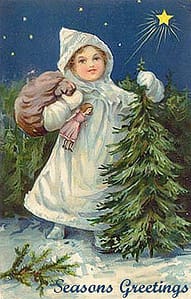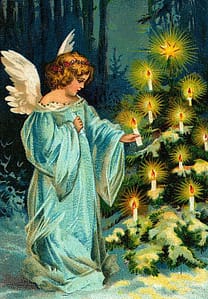Some links may be affiliate links. We get money if you buy something or take an action after clicking one of these links on our site.
Christmas All The Time is a participant in the Amazon Services LLC Associates Program, an affiliate advertising program designed to provide a means for sites to earn advertising fees by advertising and linking to Amazon.com. As an Amazon Associate, I earn from qualifying purchases.

How to handle a real Christmas tree
 Personally, I grew up with artificial trees. I consider them more humane than killing a live tree for decorative purposes, but I recognize that some people love the tradition of going out and cutting your own and I fully support all of the local tree farms that provide an opportunity for people to have natural greens in their houses for the holidays. The following is a guide to finding your perfect tree and some tips for what to do with your greens after the holidays are over.
Personally, I grew up with artificial trees. I consider them more humane than killing a live tree for decorative purposes, but I recognize that some people love the tradition of going out and cutting your own and I fully support all of the local tree farms that provide an opportunity for people to have natural greens in their houses for the holidays. The following is a guide to finding your perfect tree and some tips for what to do with your greens after the holidays are over.
For those who put so much time and effort into selecting the perfect Christmas tree, due consideration should be given to giving your tree the best possible care. If not, you will surely be disappointed when the needles start to turn brown or yellow, or branches begin to break days or weeks before the season is over. Safety is also an important reason to take proper care of your Christmas tree because a drying Christmas tree also presents a serious danger as a fire hazard. An average Christmas tree should last for about five to six weeks if the proper care is taken.
After selecting your Christmas tree, the first thing that should be done when you get it home is to make a fresh cut and place it into a stand with water. A Christmas tree shouldn’t be mounted dry. The water in its stand should be refreshed regularly. A fresh cut is made by cutting about an inch from the bottom at a slight diagonal to help the tree to absorb water. If a fresh cut isn’t made and the Christmas tree is left exposed to air, the vessels for transporting water can become blocked. This could lead to premature browning and the tree could become a fire hazard due to drying out. Your Christmas tree should be secure in its stand and it should stand away from open flames or sources of heat such as furnaces, fireplaces and air vents, all of which may dry it out.
 Decoration of the tree should begin after it has been mounted in its stand. Take sensible precautions when decorating to lessen or avoid your Christmas tree becoming a fire hazard. Ornaments that have an open flame or candles should never be used as decorations.
Decoration of the tree should begin after it has been mounted in its stand. Take sensible precautions when decorating to lessen or avoid your Christmas tree becoming a fire hazard. Ornaments that have an open flame or candles should never be used as decorations.
Christmas tree lights should be checked to make sure the bulbs are working properly, the connections are intact and that no part of the cord is damaged. If there appears to be any exposed wiring or bulbs that are not working or which are working intermittently, that string of Christmas tree lights should not be used.
Select a good Christmas tree stand because water is the most important ingredient to getting the longest life out of your Christmas tree. When selecting a stand, find out how much water it can hold when your tree is placed in it. Some water will be displaced by the base of the tree, so it is important that your decision is not based on the total volume of water the stand can hold.
According to the National Christmas Tree Association, an average Christmas tree can absorb as much as a gallon of water every day. Therefore, it’s important to check the water everyday and refill as needed. To make sure your Christmas tree gets enough water, the Association recommends that one quart of water is provided for every inch in diameter of the tree’s trunk.
After Christmas is over and your wonderfully decorated Christmas tree has provided such holiday joy, it is important to remove it before it dries out. Options to discard your Christmas will likely depend on the services offered by your local government. Some municipalities will pick up Christmas trees on specific days. Some towns may require that residents take their trees to a specific location. In others, Christmas trees will be picked up with the trash on certain dates.
 Christmas trees should never be burned in your fireplace! It can cause the build up of creosote, a colorless, oily substance that can lead to chimney fires. A much better alternative is to make mulch of the tree by cutting it to pieces yourself.
Christmas trees should never be burned in your fireplace! It can cause the build up of creosote, a colorless, oily substance that can lead to chimney fires. A much better alternative is to make mulch of the tree by cutting it to pieces yourself.
If you prefer live trees to artificial ones, please keep these important safety tips in mind to ensure a healthy and happy holiday season with the splendid, natural scent of a pine or fir tree.
i love Christmas